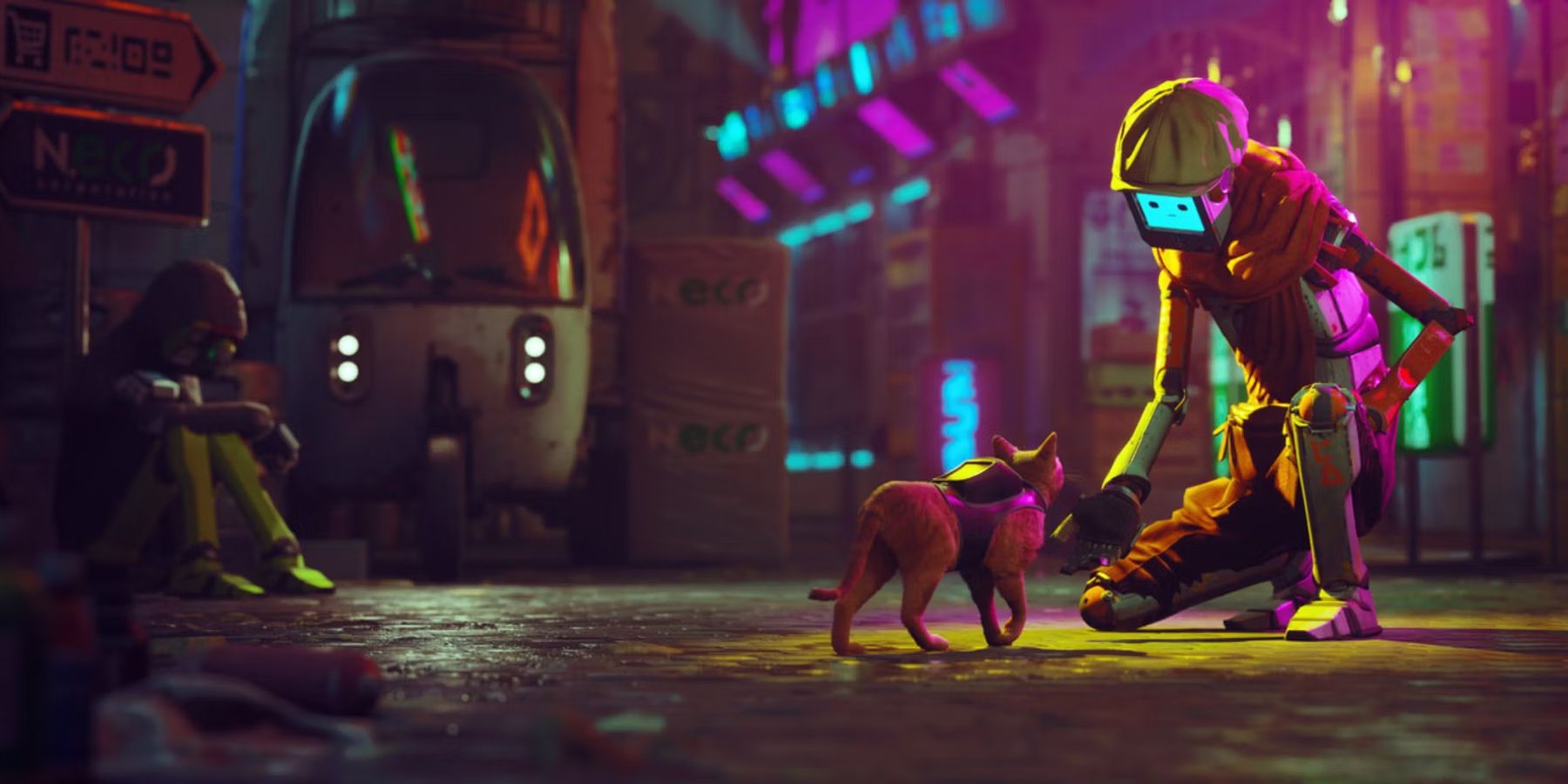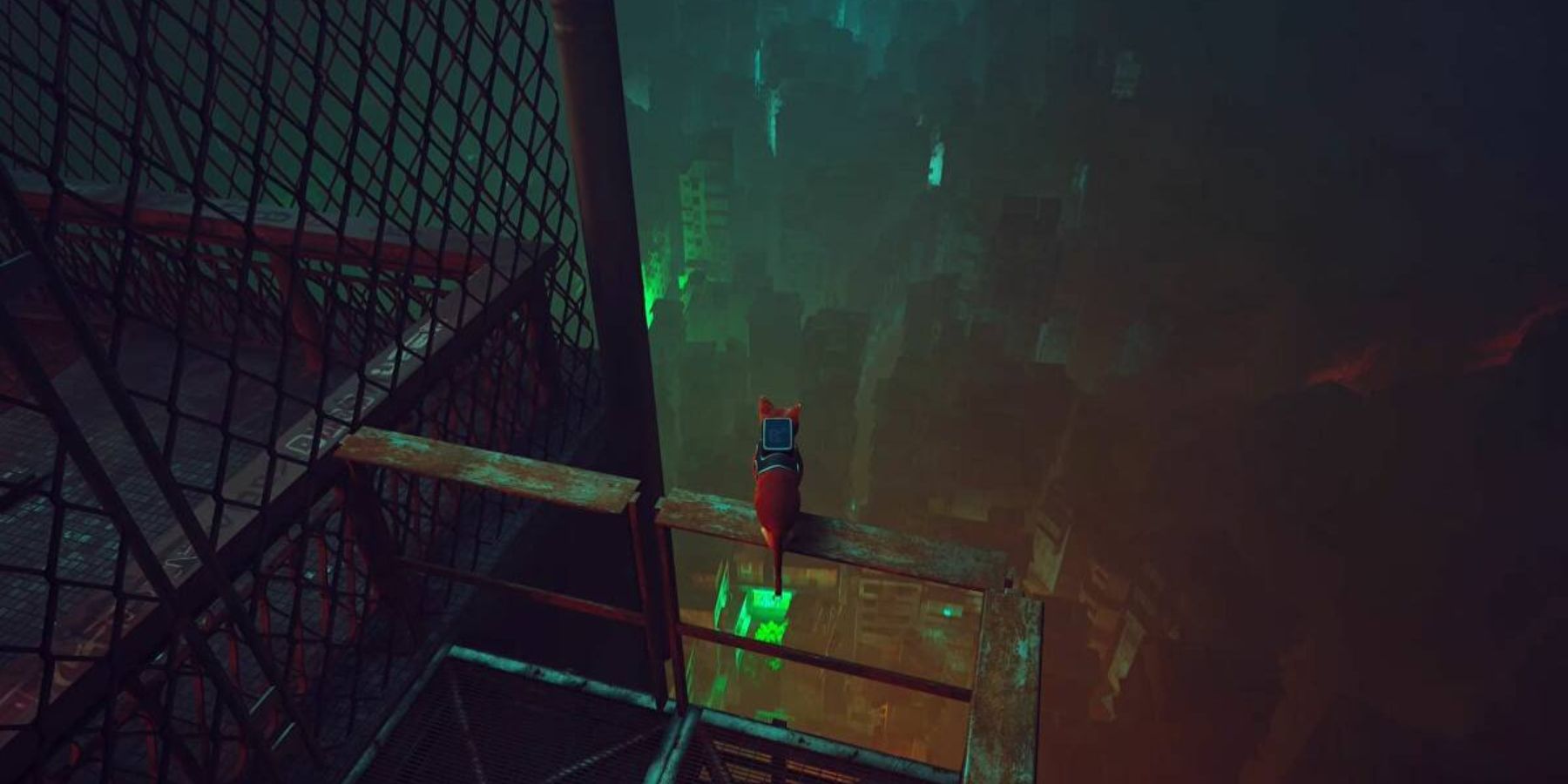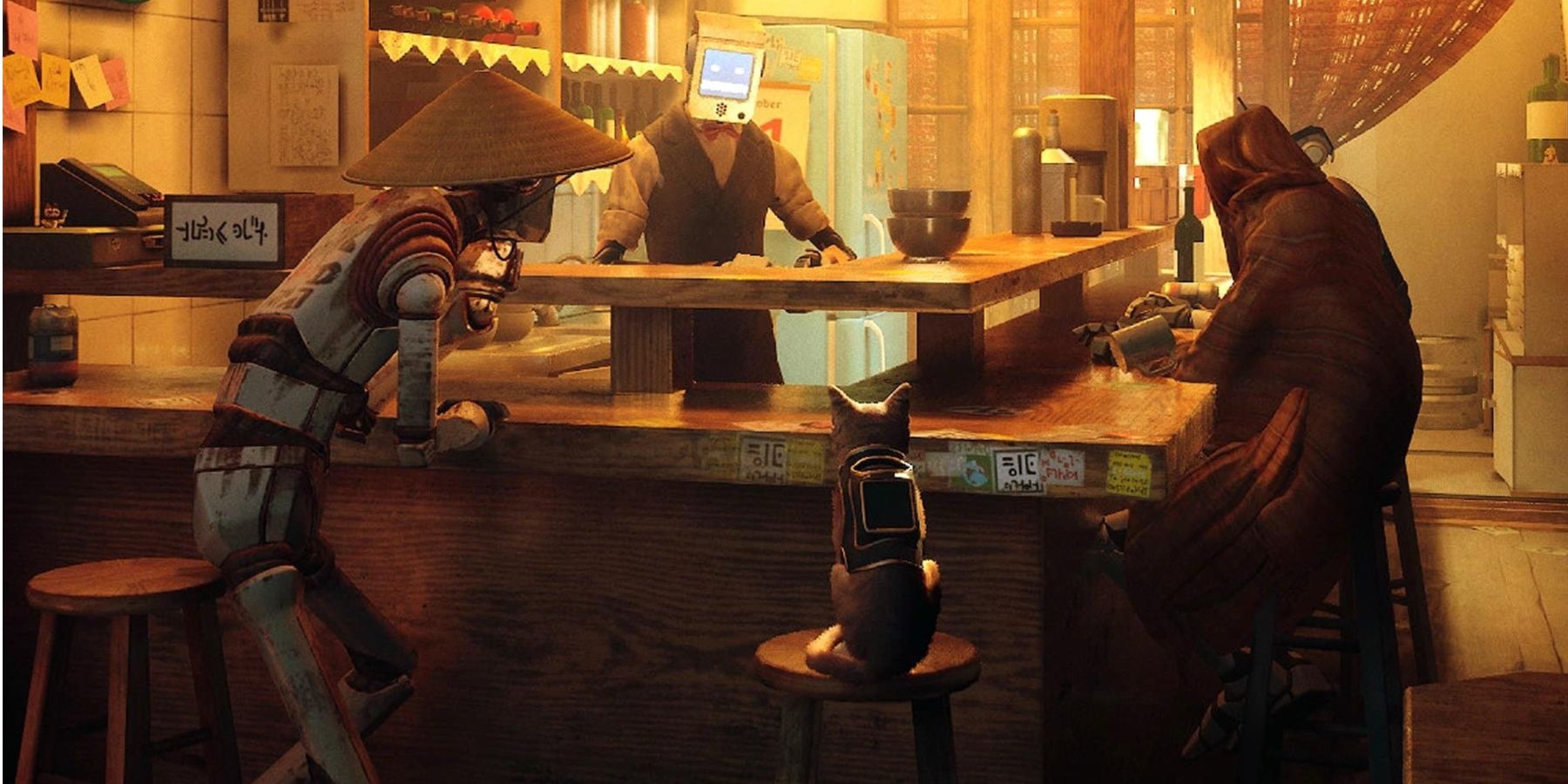Since Stray came out, it has hit the Internet by storm. It has become known as "the video game where you play as a cat," meanwhile CNN has called it "everyone's favorite new cat-centric video game," and even PETA wrote an article about how much the game gets right about cats. Even cat behaviorist Jackson Galaxy has picked up the game and shared some of his playthrough on social media.
However, this craze has missed the game's vital points. While playing a cat is wonderful, Stray is about much more than its furry protagonist. The game is packed with messages about police brutality, environmentalism, the pitfalls of capitalism, and what defines humanity. The level of attention this game has garnered seems to focus more on the cute cat rather than the story, and that is disappointing when its dystopian elements are so important.
Stray Tackles Social Issues
Stray gets deep into the effects of corporate greed. Neco is a corporation that had a hand in dooming humanity, and remnants like its logo can be found everywhere. They are the source of most enemies in the game, even after the extinction of humanity, having created the Peacemakers and Sentinals as well as the Zurks. Since it worked in waste management, it is hinted that Neco was partly at-fault for the environmental calamities that caused humanity to lock themselves in the Walled City. Neco profited from this as well, and likely made Stray's plague that killed humanity even worse.
Another big theme is police brutality. While robots have evolved in beautiful ways, such as having emotions, families, restaurants, fashion stores, and more, they have also picked up some of humanity's greatest vices - like using brutality to maintain a status quo. The Peacemakers and Sentinals control the city through fear, and they torture and even reset jailed robots that don't obey.
Another vice the robots picked up is class division. The game's levels move up from the slums to Midtown, and show the difference between them. The slums are right next to the Zurks, putting the slum robots in far more danger - players can even find corpses on the rooftops. Other places have rave parties, fashion stores, and less high-stake lives, and this class divide is tragic as all the robots seem deserving of safety and nice things.
One lesson Stray teaches is that the status quo is not always right. All robots, except those who rebel, believe the outside is not habitable, and they have lived so long within the Walled City that they cannot imagine a beach or forest. They listen to the Sentinals, who do everything they can to stop all from getting outside, and the status quo does not change until a cat comes because everyone is afraid and powerless. Lastly, environmentalism is an overarching issue. It seems that a lack of care for the planet is what made humans go into the Walled City in the first place, and that became trashed got so bad that Neco Corp created bacteria to eat the city's garbage.
Stray As a Work of Hopepunk
It can be said that the focus of playing as a cat has gotten more attention because the social issues are depressing. After all, news of police brutality, climate chaos, and class divide overwhelm news sites every day. However, Stray is still special in the way it deals with all the serious subjects: It is not just a cyberpunk story, but hopepunk as well.
Like other punk subgenres, hopepunk explores the disruption of the status quo, but with hope rather than pessimism. It shows not only that there are causes worth fighting for, but that these battles can also be won. Hopepunk rejects fatalism, and at the end of Stray, the walls do open so the robots can be free to explore the world.
Amid its social issues, there is a lot of love and hope in Stray. The robots are a miracle, originally being programmed to just clean streets but now being able to dream, dance, and make art. Even within the walls, humanity found a way to grow plants without sunlight, and the robots still take care of these plants, despite not needing oxygen. This is an example of a hopepunk trait called "radical kindness;" many of the characters have good hearts and do things despite not getting anything in return.
All of this craft and the messages about love and care being overshadowed by a feline protagonist does not do Stray justice. The cat is wonderful and deserves attention, but the Internet craze may be forgetting a lot of what is important, especially in the current times. Hopefully Stray will not just increase attention to animal-centered games, but ones that continue to explore the hopepunk genre as well.
Stray is available now on PC, PS4, and PS5.



